The Best Homemade Hummingbird Food Recipe
Updated Jan 14, 2025
This post may contain affiliate links. Please read our disclosure policy.
Attract beautiful hummingbirds to your backyard or garden with this simple homemade hummingbird food recipe. Learning how to make hummingbird food will help you bring these busy little birds to your yard all season long and is a fun family nature activity!
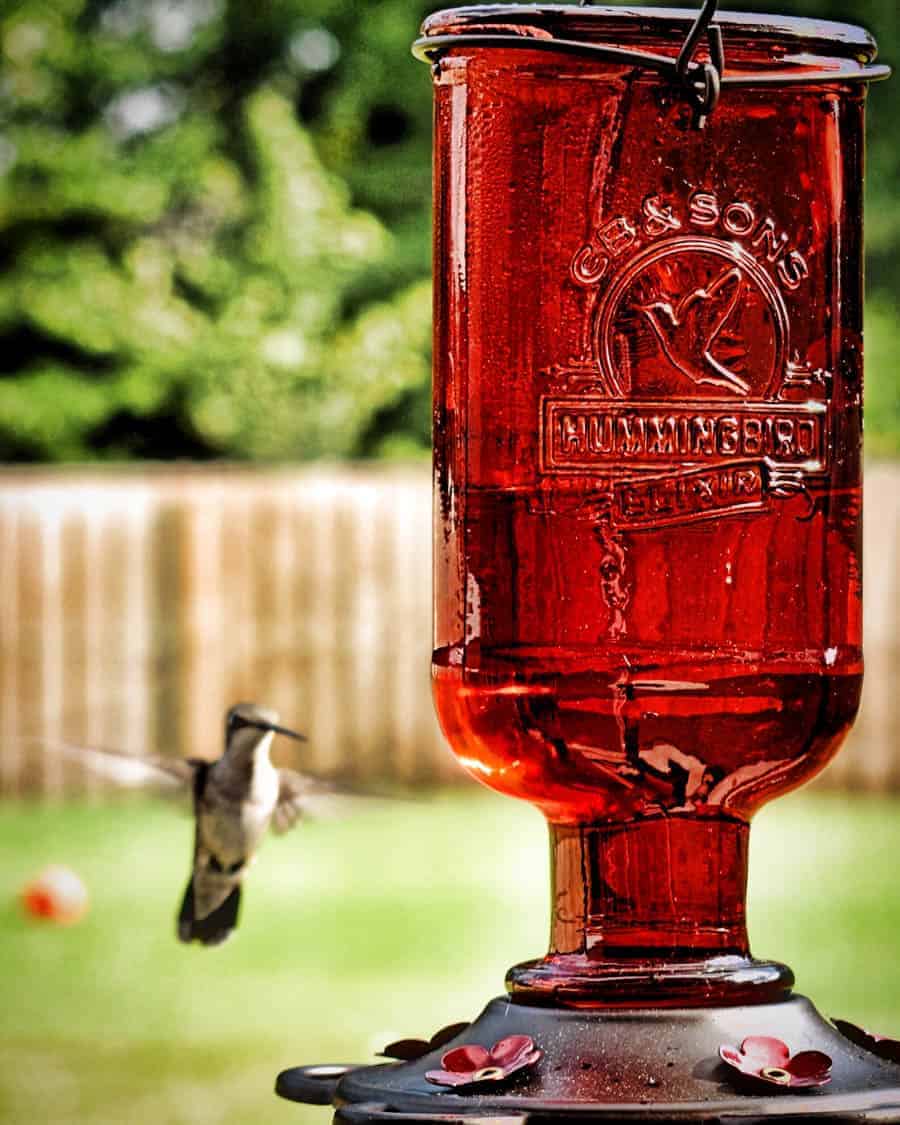
Table of Contents
- Homemade Hummingbird Food Recipe
- Easy Hummingbird Food Recipe
- Why Make Your Own Hummingbird Food
- Hummingbird Food Ingredients
- How to Make Hummingbird Food
- FAQs
- Expert Tips
- Ideas for Putting Hummingbird Feeders in Your Yard or Garden
- Plants to Attract Hummingbirds
- What is the Best Hummingbird Feeder?
- How to Clean a Hummingbird Feeder
- 10 Fun Facts About Hummingbirds
- More Fun Crafts, Activities & Recipes to Consider
- The Best Homemade Hummingbird Food Recipe
Homemade Hummingbird Food Recipe
I’ve written before about my adoration for the whimsical creatures that are hummingbirds. Previously I shared about how to attract them to your own yard in this blog post! They just fascinate me and bring so much joy and wonder to outdoor spaces.
I grew up watching their little bodies flit and flutter outside the window at my Grandma’s house, and ever since, I’ve always been delighted when they show up in my garden to feed on flowers or from my hummingbird feeder.
Easy Hummingbird Food Recipe
4 cups of water to 1 cup sugar
Why Make Your Own Hummingbird Food
My kids always get a kick out of observing these little guys, too. It’s just so much fun for the whole family! That’s why I want to share the simplest and best homemade hummingbird food with you all today. It’s two ingredients and couldn’t be easier (or faster) to make, and it’s sure to bring a few of these pretty birds to your yard this season.
I will advise right off the bat not to use red dye, which some sources say to mix into the food. Hummingbirds like the bright color red because it reminds them of sweet flowers, but just use a red feeder for the same effect since dye can be harmful to the little hummers’ health.
Homemade hummingbird food is inexpensive and a more healthy option than store-bought food. The commercial pre-made hummingbird food tends to have harmful chemicals and preservatives that are not healthy for the birds.
I love to make a batch of my favorite granola bar recipe snack (or a simple smoothie recipe), take a snack outside, and spend some time enjoying nature and these highly entertaining little critters. Seriously, they’re so entertaining and good for the soul.
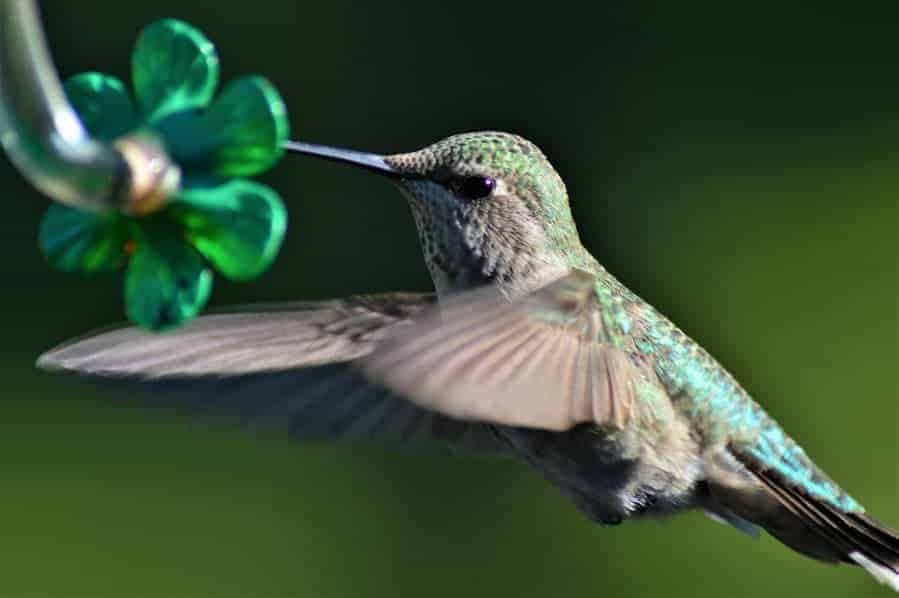
Hummingbird Food Ingredients
Homemade hummingbird food only requires two simple ingredients that I guarantee you have at home. To make this hummingbird food recipe, you’ll need:
- Hot water
- Granulated sugar
That’s it!
How to Make Hummingbird Food
- Simply boil the water, then remove from the heat.
- Add the sugar and stir until the sugar dissolves.
- Let the mixture cool completely, then pour into the hummingbird feeder.
Start keeping an eye on your feeder because once these beautiful birds realize there’s sweet sugar water for them to drink, they’ll start visiting your feeder as often as possible.
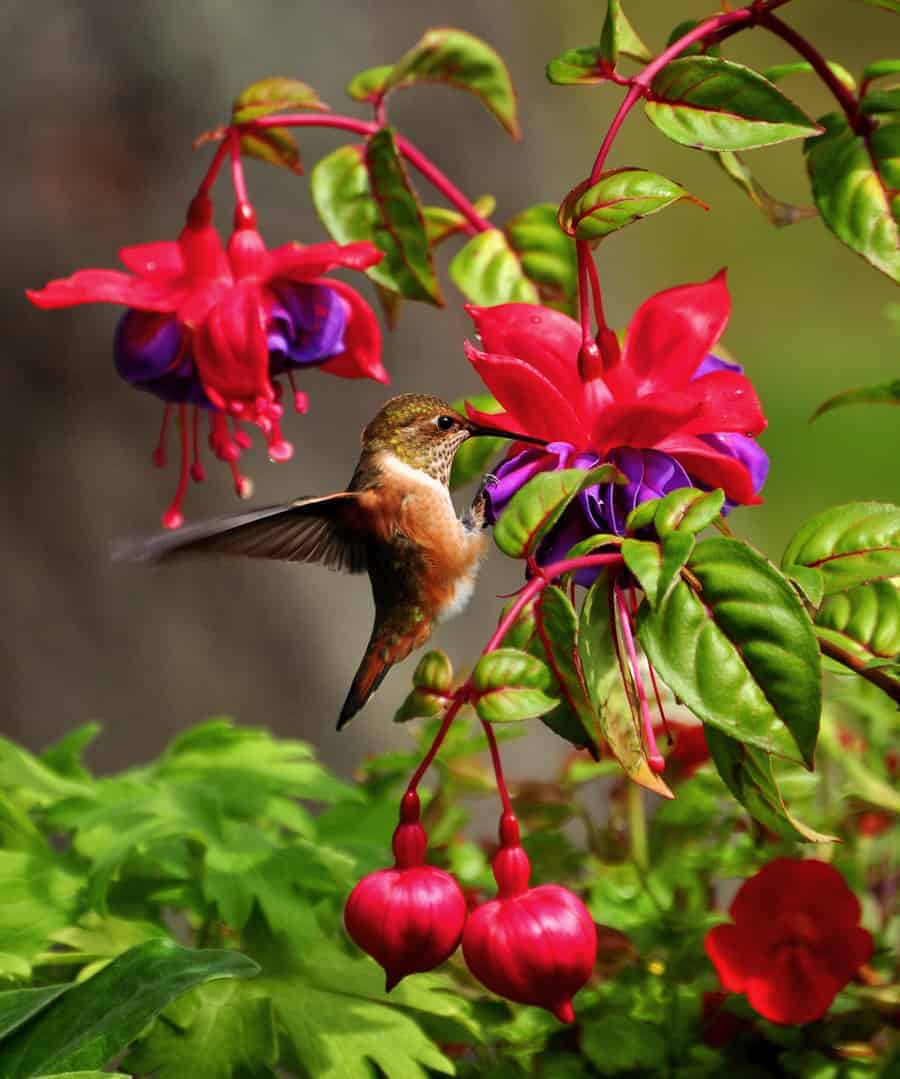
FAQs
You can! Just be sure to boil it before using so that it dissolves the sugar, and the boiling will remove any impurities.
You’ll want to use granulated white sugar—or regular table sugar. Do not use raw or unprocessed sugars, honey, or corn syrup because those can be harmful to hummingbirds’ health.
It’s recommended to boil the water to help clean it of any impurities that might be in the water.
Hummingbirds can often be seen feeding on nectar at dawn or dusk.
Expert Tips
- Refrigerate Sugar Water: Store leftover sugar water in the fridge for up to 2 weeks. If you notice mold growing in the mixture, toss it and make a fresh batch.
- When to Clean: Best practice is to change and clean out feeders every other day, but if you miss a time or two, just make sure you’re switching out the food and cleaning it out at least twice a week during warm months and once a week in cooler months. This helps to prevent mold growth.
- Don’t Use Red Dye: Foremost, red dye or red food coloring isn’t necessary because many feeders themselves are red—plus, dye is harmful to hummingbirds’ health, so be sure to skip it.
- Real Sugar Only: Please don’t use artificial sweeteners! Basic white cane sugar, or organic sugar, is just right for the birds.
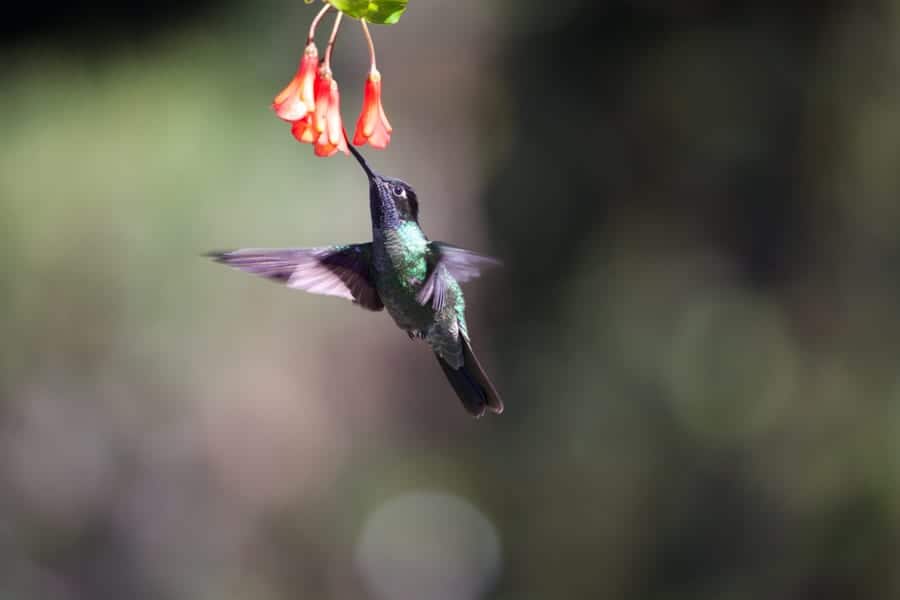
Ideas for Putting Hummingbird Feeders in Your Yard or Garden
Putting feeders in the right spot at the right time of year is crucial to bringing the birds back season after season. It’s also more inviting if your yard and garden have plants that attract and feed hummingbirds, too!
When to Put Out Feeders
Hummingbirds migrate with the seasons, so when you put out a hummingbird feeder depends on where you live.
- For those who lives in southern parts of the States, you can set up feeders from February through November.
- Across the middle of the country, plan on placing feeders from April through October.
- Along the northern states in the U.S., put hummingbird feeders out from early May through September.
Where to Put Feeders
Place your hummingbird feeder in low-activity areas (away from where pets or kids might play often because hummingbirds can be shy and territorial!). Close to trees is best because they like to perch on branches to watch out for predators.
Hummingbird feeders should be placed in partial sun. If your feeder is in the sun all day, it will spoil faster.
You want to put the feeder somewhere where you can see it but also somewhere that the hummingbirds feel comfortable. They don’t like to be out in the open, so the partial shade of a tree or bush, or hanging from a canopy or your house is a good location.
Plants to Attract Hummingbirds
Hummingbirds love flowers that are brightly colored and produce lots of nectar, including bee balm, trumpet honeysuckle, and bleeding hearts. They also really like red tubular flowers.
(Source)
Here are some fun ways to learn more about attracting these special birds to your garden!
- Little Known Ways to Attract Hummingbirds to your Garden
- What kind of Hummingbird is that? The Most Common Hummingbirds in North America
- The Best Ways to Set Up a Hummingbird Feeder
- The Best Hummingbird Feeders You Will Want to Buy
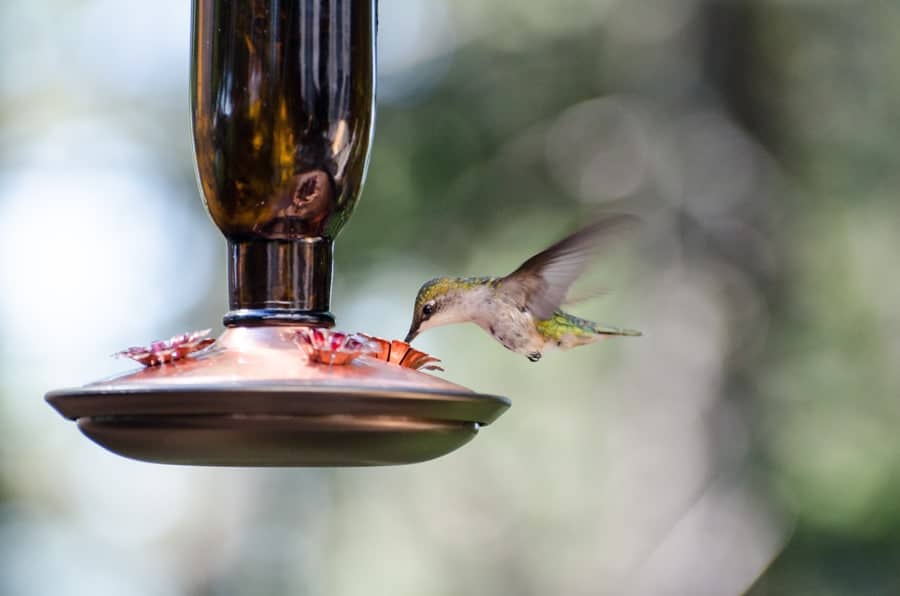
What is the Best Hummingbird Feeder?
A good hummingbird feeder should be sturdy, have lots of red on it, be easy to wash, fill, and hang, AND it should be a good price.
This glass hummingbird feeder from Kingsyard is one of my absolute favorites. Besides its pretty appearance, it’s super sturdy and easy to clean. It can hold up to 24 ounces of bird food and has 6 feeding ports that are all leak-resistant. Plus, it’s available in 6 different bright colors, all of which are guaranteed to attract hummingbirds galore to your outdoor space!
I also like:
- Nature’s Rhythm Red Antique Glass Bottle Hummingbird Feeder (holds 28 ounces, 5 feeding spots)
- Juegoal Glass Hummingbird Feeders (holds 26 ounces, 5 feeding spots)
- Sewanta Hummingbird Feeders, plastic (holds 32 ounces, 10 feeding spots, pack of 2 feeders)
How to Clean a Hummingbird Feeder
It is important to regularly clean feeders to avoid mold growth and protect the delicate hummingbirds. Every other day is recommended.
Rinse your bird feeder with very hot water. It is advised not to use soap because the residue can change the flavor of the nectar. Use a small brush to clean in an holes or crevices.
How to Clean Hummingbird Feeder with Vinegar
A deeper cleaning of your hummingbird feeder is in order about once a month. To disinfect, soak your feeder in vinegar or hydrogen peroxide. Combine 1 part vinegar and 2 parts water. Take the feeder completely apart and let it soak in a bucket for 1-2 hours.
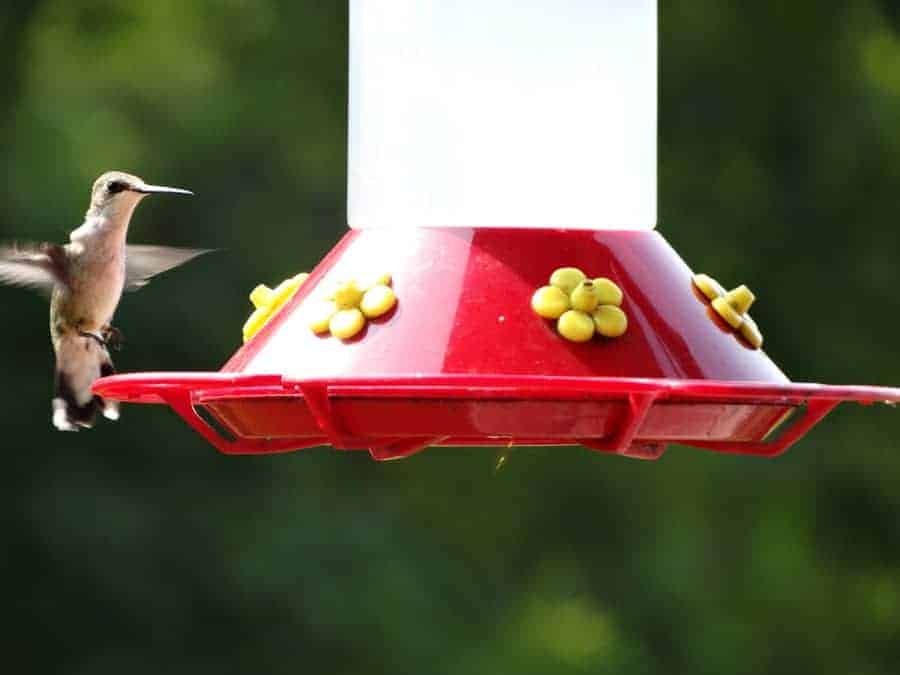
10 Fun Facts About Hummingbirds
Hummingbirds are truly remarkable little creatures. Check out these fun little factoids:
- A hummingbird’s heart beats about 1,200 beats per minute. Just to compare, on average, a human heart beats 60-100 beats per minute.
- Hummingbirds have very good eyesight but have no sense of smell.
- The smallest eggs of all birds are laid by hummingbirds. They are only 1/2-inch long. Their eggs are tinier than a jelly bean!
- Hummingbirds can fly up to 30 mph.
- On average, hummingbirds eat 5-7 times an hour. They have a very high metabolism. Hummingbirds consume half of their body weight in sugar over the course of a day.
- Hummingbirds have fewer feathers than any other species, around 1,500. They are small, so they don’t require as many feathers, but having fewer feathers also keeps them lighter and more able to fly.
- Hummingbirds are the only birds that can fly in any direction. They can fly up, down, sideways, forward, and backward.
- The life span for hummingbirds, on average, is 3-5 years.
- The memory of a hummingbird is impeccable. They remember every feeder and flower they have flown to.
- The females are the nest builders in the hummingbird world. They only lay 2 eggs at a time, and their young stay in the nest for about 3 weeks.
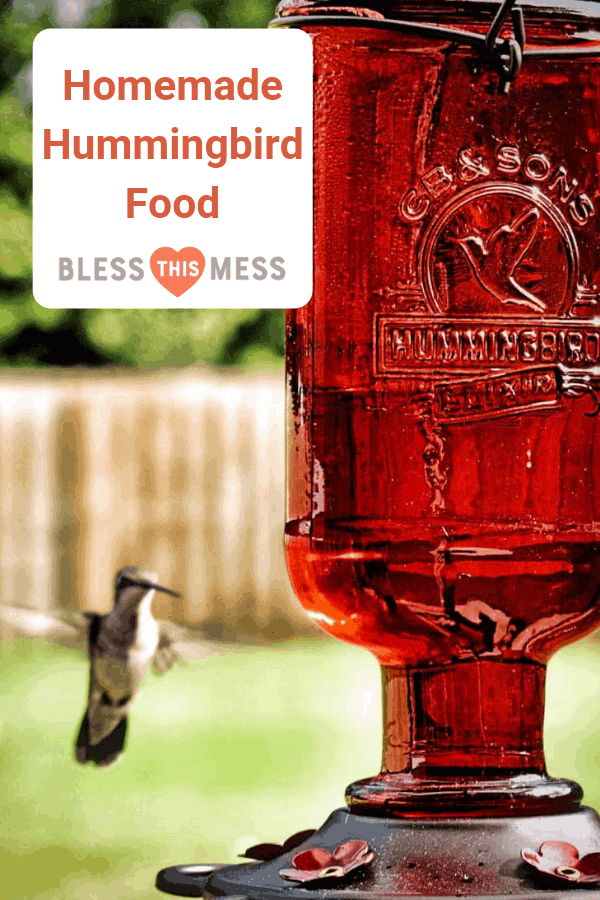
More Fun Crafts, Activities & Recipes to Consider
Preserving Guide
How To Preserve Broccoli
Preserving Guide
How To Preserve Beets
Preserving Guide
How To Preserve Green Snap Beans
Preserving Guide
How To Preserve Asparagus
Did you make this recipe? Leave a ⭐️ review and share it on Instagram, Facebook, or Pinterest!
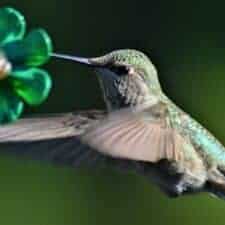
The Best Homemade Hummingbird Food
Equipment
Ingredients
- 4 cups very hot tap water
- 1 cup white granulated sugar
Instructions
- Boil your water on the stove for 1 minute.
- Remove the water from the stove and stir in the sugar. Stir until the sugar dissolves.
- Allow the mixture to come to room temperature.
- Fill your humming bird feeder as directed on individual instructions.
- Store leftover sugar water in the fridge for up to 2 weeks.
Notes
- If there are noticeable signs of mold on your sugar water before 2 weeks, discard and make a fresh batch.
- Please do NOT use red dye. Red dye is harmful to hummingbirds. Use a red feeder to attract them instead of dyeing their food.
- Don’t use raw or natural sugars—they contain too much iron that can hurt hummingbirds.
- Do not use honey or corn syrup.

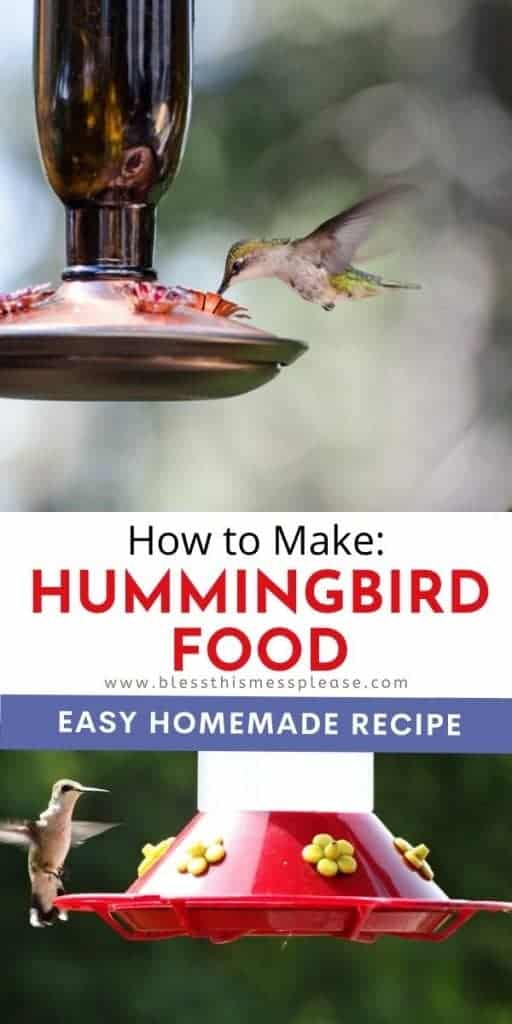
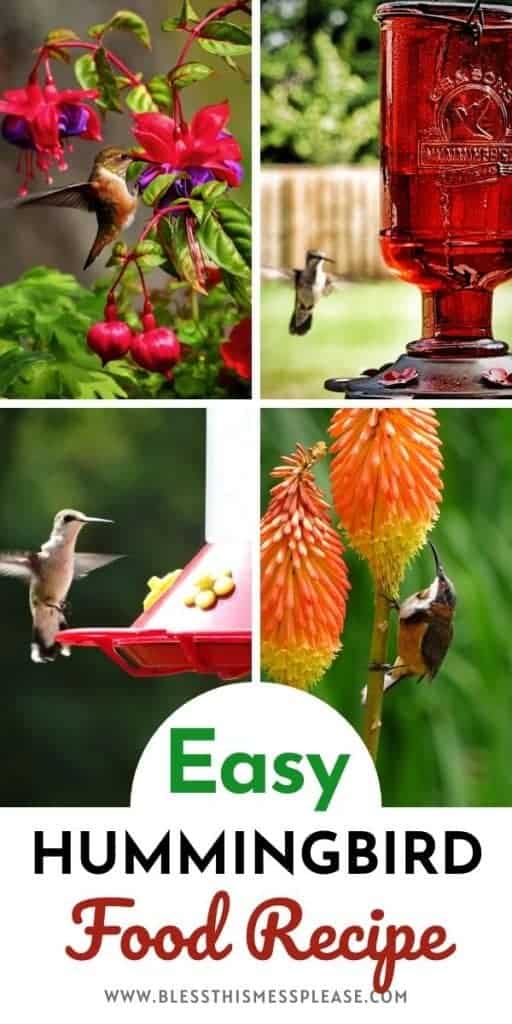
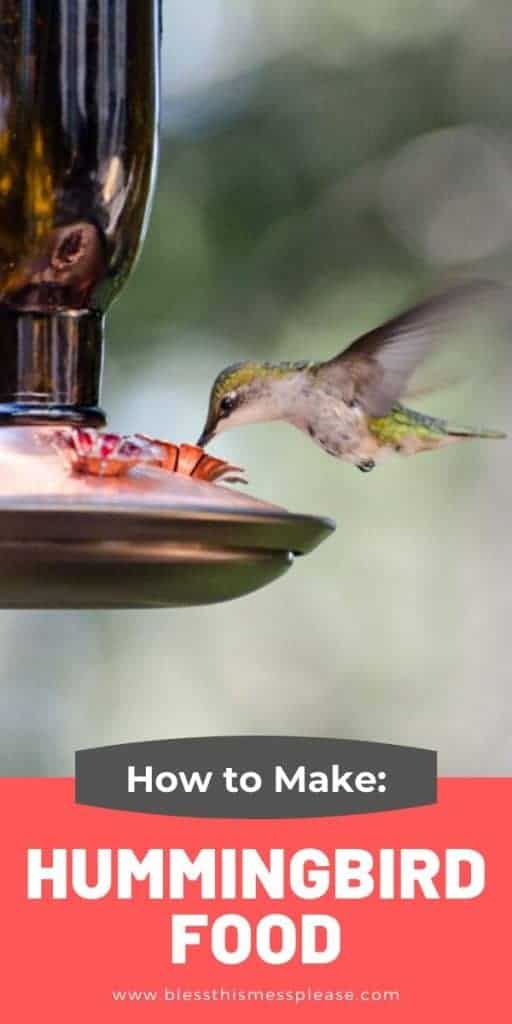
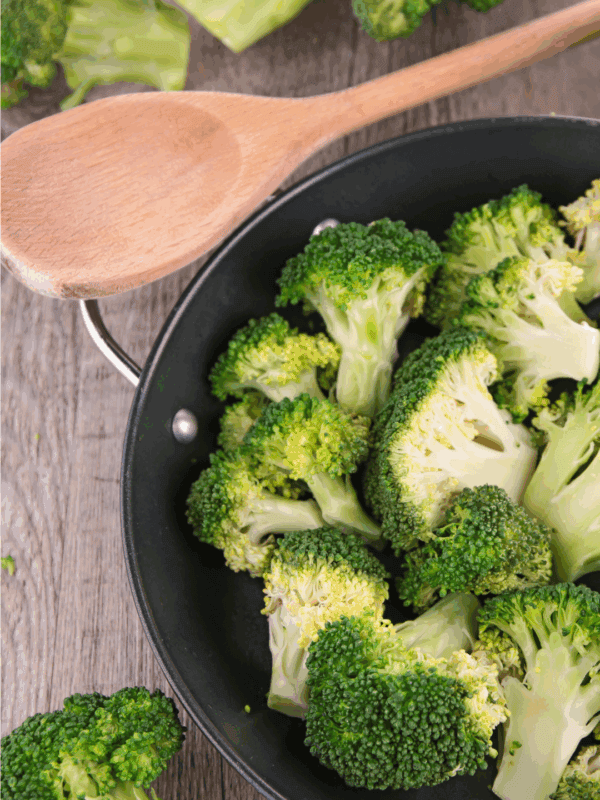
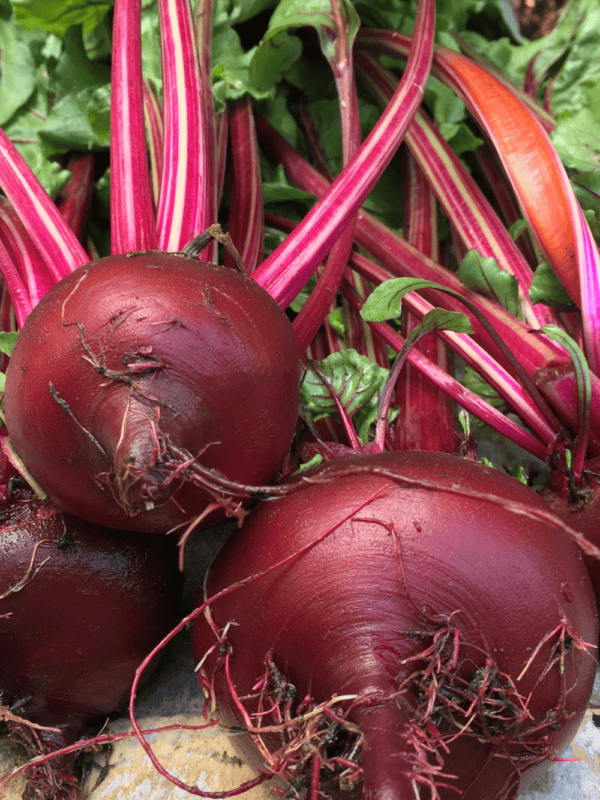
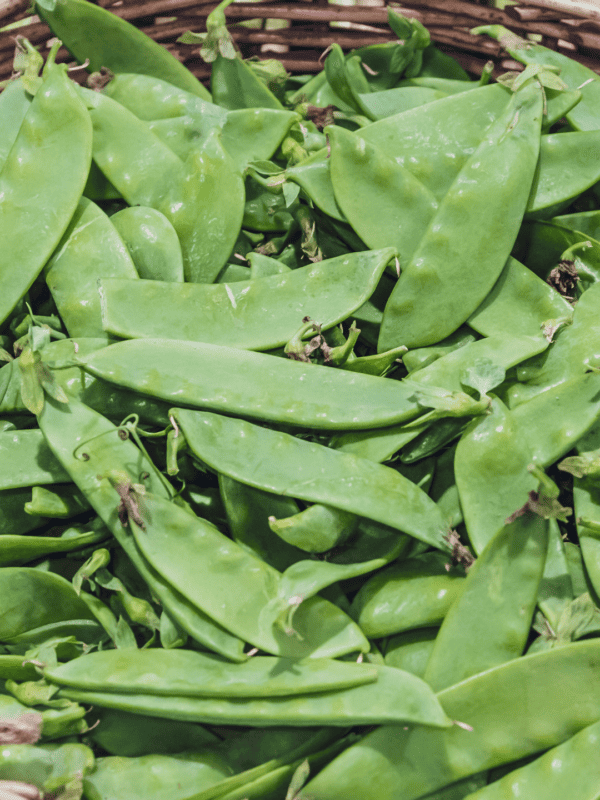
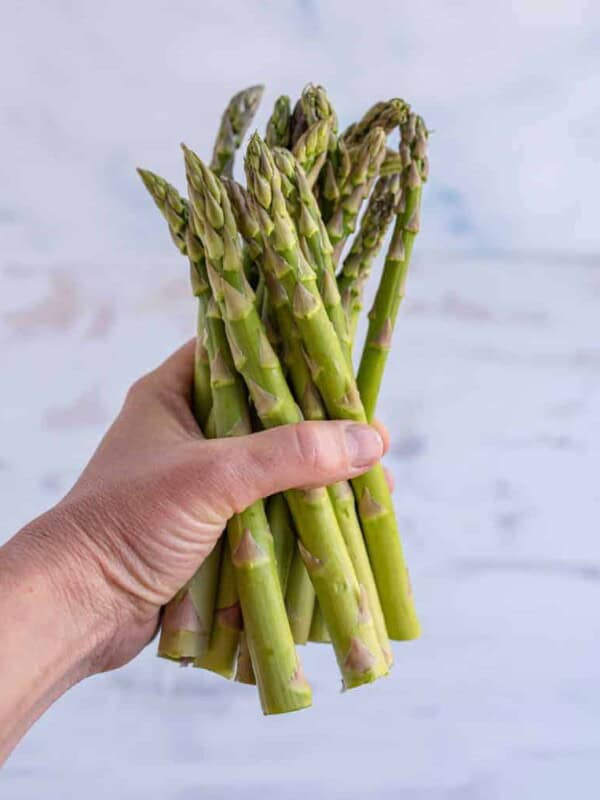






Thank you ,very informational! 💕⚘️🦋
I found this recipe about a year ago …and the hummingbirds on my balcony love it ! Thank you 😊
This is very good recipe.
great article
We set out 3 hummingbird feeders in Michigan and we found the most popular recipe the dozen or so hummingbirds was 1 cup hot water with 1/3 cup granulated sugar dissolved and cooled. Making too much at a trine is a wast as the feeders should be cleaned every 3-4 days and refilled.
Sugar water is bad for hummingbirds.
Sugar water is bad for hummingbirds.
Melissa, I have 2 things to add. First, I had a bee problem. I learned that having an all-red feeder eliminates that problem, so I took some red mail polish and painted over all the yellow places. That did indeed deter the honeybee feeders. Second, put a blob of petroleum jelly on whatever you hang the feeder from. I have a shepherd’s hook, so I apply PJ at the bottom and again near the top where I have twine tied around a post that supports it (it gets windy here sometimes). I also put PJ on the wire hook I have constructed on the shepherd’s hook, above where the feeder hangs). This keep the ants from crawling onto the feeder. The PJ lasts more than a year.
I use the above recipe for many years. When I clean my feeder, which is the one pictured above, it has a sugar syrup in the bottom. Should I reduce some sugar in the recipe?